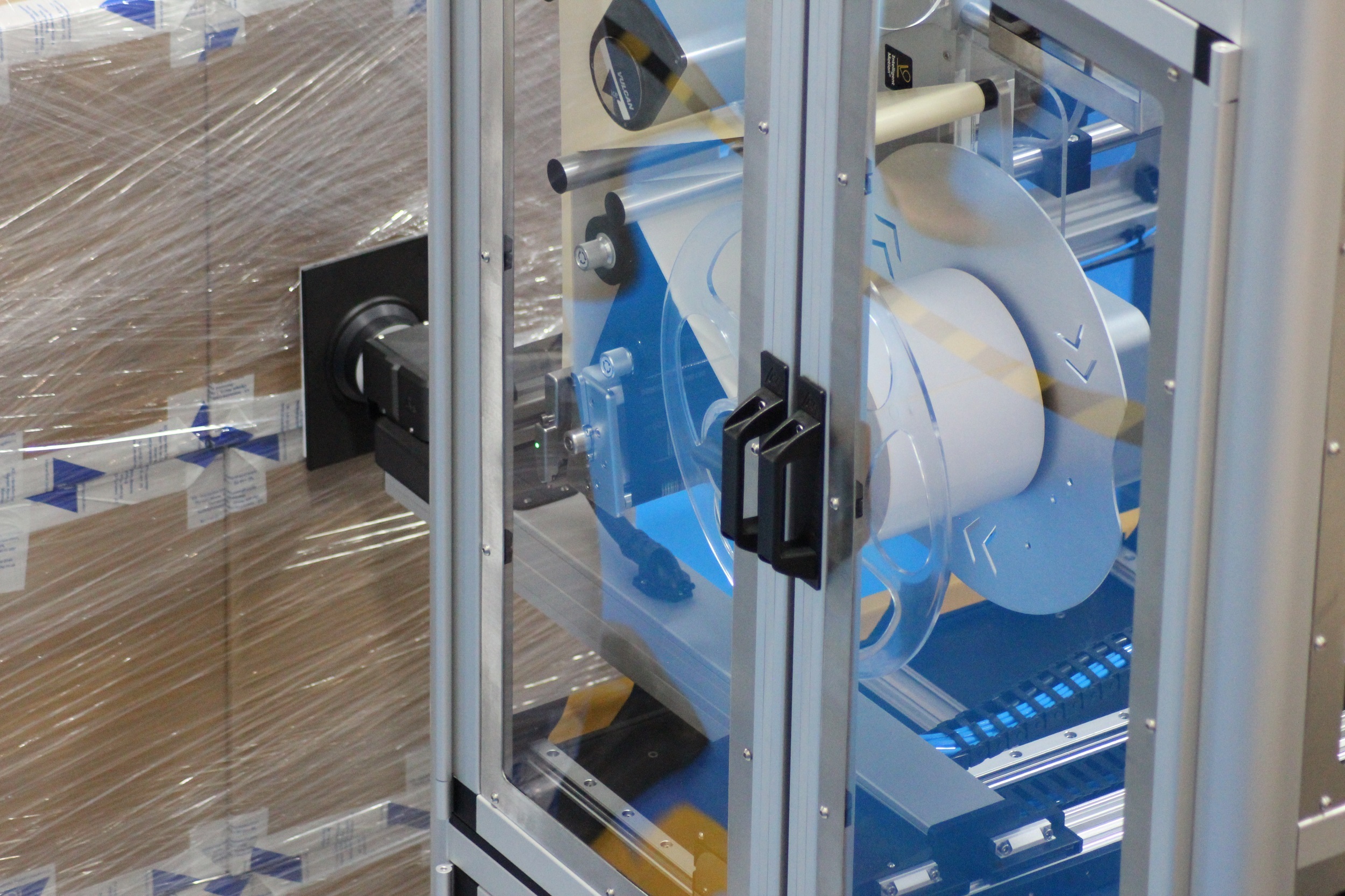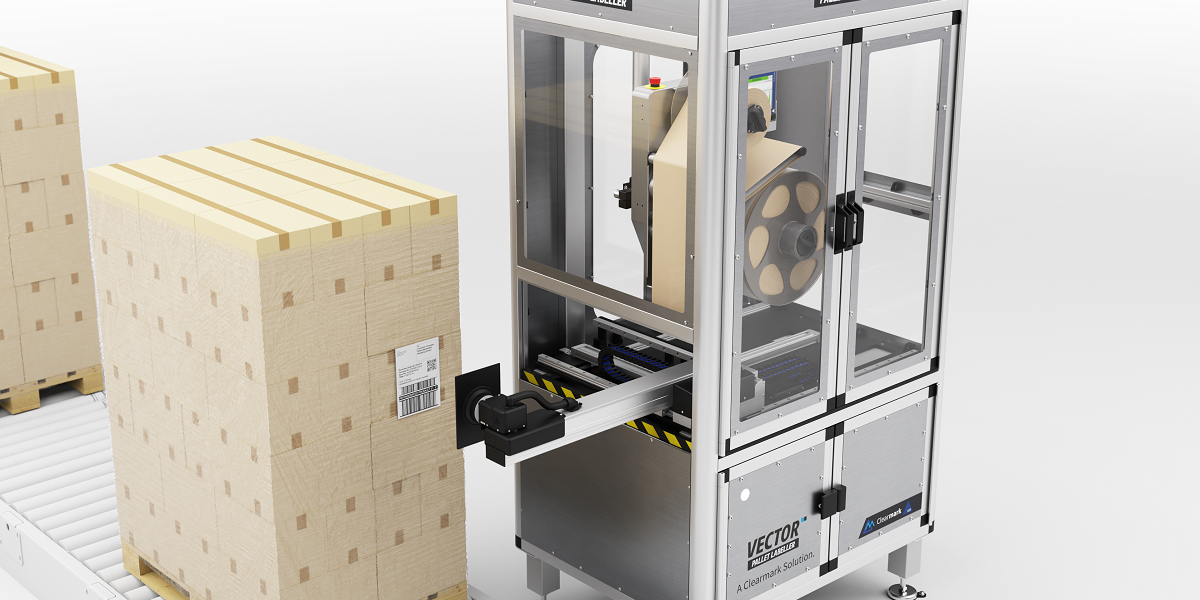GS1-128 Data Embedded Barcodes
Introduction
After recent food scandals worldwide, customer and government concerns regarding food safety have driven more demand for product traceability within the retail and food service industries. Because of this, food manufacturers are now considering adapting their coding to the GS1-128 case identification, allowing for more data to be included on a barcode, which in turn, can lead to improved traceability throughout the entire supply chain.
What is a GS1-128 barcode?
The GS1-128 barcode was developed to provide a global standard for exchanging data. GS1-128 not only encodes the data, but it also provides a method of defining the meaning of the data by defining a list of application identifiers (AIs).
It is a GS1 Standard that defines both the kind of data and the data format. Some manufacturers can select from over 100 AIs to encode on a GS1-128 barcode on a packaged item.
What a manufacturers benefit from
- More accurate data
- Better stock management
- Greater Insight
What a customer benefits from
- Better waste management
- Targeted stock control
- Stronger legal compliance
- Improved customer knowledge
Benefits for the supermarket
- Improved product
- Greater Product knowledge
What does one look like?
What are the competitive benefits?
Traceability
Consumer and government demands mean manufacturers have no choice but to adapt to increased data sharing and GS1-128 is the simplest way to do it.
Application identifiers
Companies can encode the most relevant information for each product from its manufacture, as well as the data required by distributors (i.e. best before date, batch code, use by date).
Automated procedures
Automated procedures can deal with split pallet deliveries on a more regular basis as opposed to half and quarter pallets sporadically. Not only does this save time in the warehouse, but much needed storage space and in turn, money throughout the distribution process.
Better visibility
Better visibility over the supply chain due to the additional data and more detailed printing requirements to ensure all GS1-128 barcodes are clear and readable.
Customer confidence
The rapid development of technology makes it possible for consumers and government bodies to track any item from production to consumption, ensuring your barcode meets these expectations enhances consumer confidence in your product and brand.
Competitive edge
Consumer shopping habits have transformed over the last five years alone, shoppers are becoming savvier with their money and shopping. All levels of food supply now need that competitive edge not only when it comes to price and quality, but both availability and ethics are now huge factors in purchasing decisions.
Speed
On demand is no longer just a perk - it’s expected. GS1-128 barcodes allow distributors to; have the most up to date stock information at hand, more choice due to less wasted space on pallets in the warehouse and can make it easier for consumers to find their exact ideal product.
Why is GS1-128 important?
Food safety
Addressing food safety is a global issue, and any issues can be costly in both monetary value and a company’s reputation within the industry; particularly if any food safety issues prove to be fatal.
The faster suppliers can deal with any safety issues the better; having a GS1-128 barcode with additional data could be the difference between a small scale issue and a huge product recall. For worldwide distributors, using a globally recognised standard like the GS1-128 barcode means that trading partners essentially speak the same language when it comes to the code, improving not only the traceability levels, but the ways people can communicate any issues that may arise.
Food fraud
According to Food Manufacture, fraud within the food and drink industry is estimated to cost over £12 billion every year in the UK alone. The data, and in turn the traceability of every single item using a GS1-128 barcode, is an essential weapon in the fight against food and drink crime.
Food waste prevention
A report by the WRAP warns that one third of all food produced in the world ends up as waste, however recent innovations in the world of barcodes and data sharing means that over ¼ million tonnes of this waste could be prevented through supply chain efficiencies.
Using a GS1-128 barcode to trace an item’s price, expiry date and origin holds significant benefits for supermarkets and suppliers’ battle with waste.
Stock efficiency
Competitive markets mean margins are tighter for many businesses, by using GS1-128 barcodes; companies can match supply to demand on a more granular level and avoid holding large quantities of stock unnecessarily.
Which data combo works best?
For food retailers and suppliers, where additional information can be useful at POS as well as throughout the distribution process, using the GS1 Databar Expanded or the GS1 Databar Stacked barcode symbols would be the most beneficial. This would require an online printing solution.
Option 1 - GTIN + Batch Number
GTIN + Batch Number enables POS to alert the customer and distributor to any product recall issues to avoid further potential contamination.
This information can also be printed onto the customer receipt, in case of future recall that may ask for consumers to identify a batch number for safety purposes.
Option 2 - GTIN + Expiry Date
GTIN + Expiry Date enables POS to determine if a product is outdated, or close to the expiry date. This allows the POS to make automatic price reductions (saving time and manpower) where necessary, allowing customers to exchange the product if they wish, or stopping a sale altogether.
Not only will this help reduce food waste in the long run, but improve consumer confidence with the brand.
Printing GS1-128 barcodes
There are many considerations when printing the GS1-128 barcode. Everything from packaging material, line throughput and code size/position needs to be developed to ensure that the code can be read perfectly.
The GS1-128 barcodes require a higher quality of printing resolution than regular GTIN codes to ensure that all the data is readable.
Ideally, these more complex codes need to be printed at the point of product manufacture. For primary packaging it is recommended to have two codes where possible, subject to the quality of the packaging itself. Scanners then have at least one readable code depending on the packaging storage environment.
Primary packaging
For primary packaging, the Zodiac Hawk Thermal Transfer overprinter is the ideal solution for a GS1-128 stacked barcode. The printers can be integrated onto a variety of production lines using the latest innovations in bracketry design and installation.
Find out more about the ICE Zodiac Hawk.

Secondary packaging
For secondary packaging codes, a minimum of one barcode is required, but two barcodes are required if the codes are pre-printed onto the cardboard outer packaging. [1]
LPA solutions such as the ICE Vulcan Print and Apply labelling System is currently the most common approach to meet barcode requirements for the GS1-128 labels, this allows manufacturers to control the printed surface of the barcode and ensure that the quality of code required is met.
Find out more about the ICE Vulcan Print and Apply Labeller.

Tertiary Packaging
Finally, for tertiary packaging, Serial Shipping Container Code (SSCC) labels need to be applied to the pack. SSCC is the GS1 Identification Key used to identify a unit within a supply chain.
The Vector can perform up to four label applications per pallet, with two adjacent sides to conform to GS1 specifications for SSCC pallet labelling or three sides for customer specific applications.
Find out more about the ICE Vector Pallet Labeller.

[1] https://www.gs1uk.org/sites/de...
Related Articles
SSCC for pallet labelling

What is automated pallet labelling?


